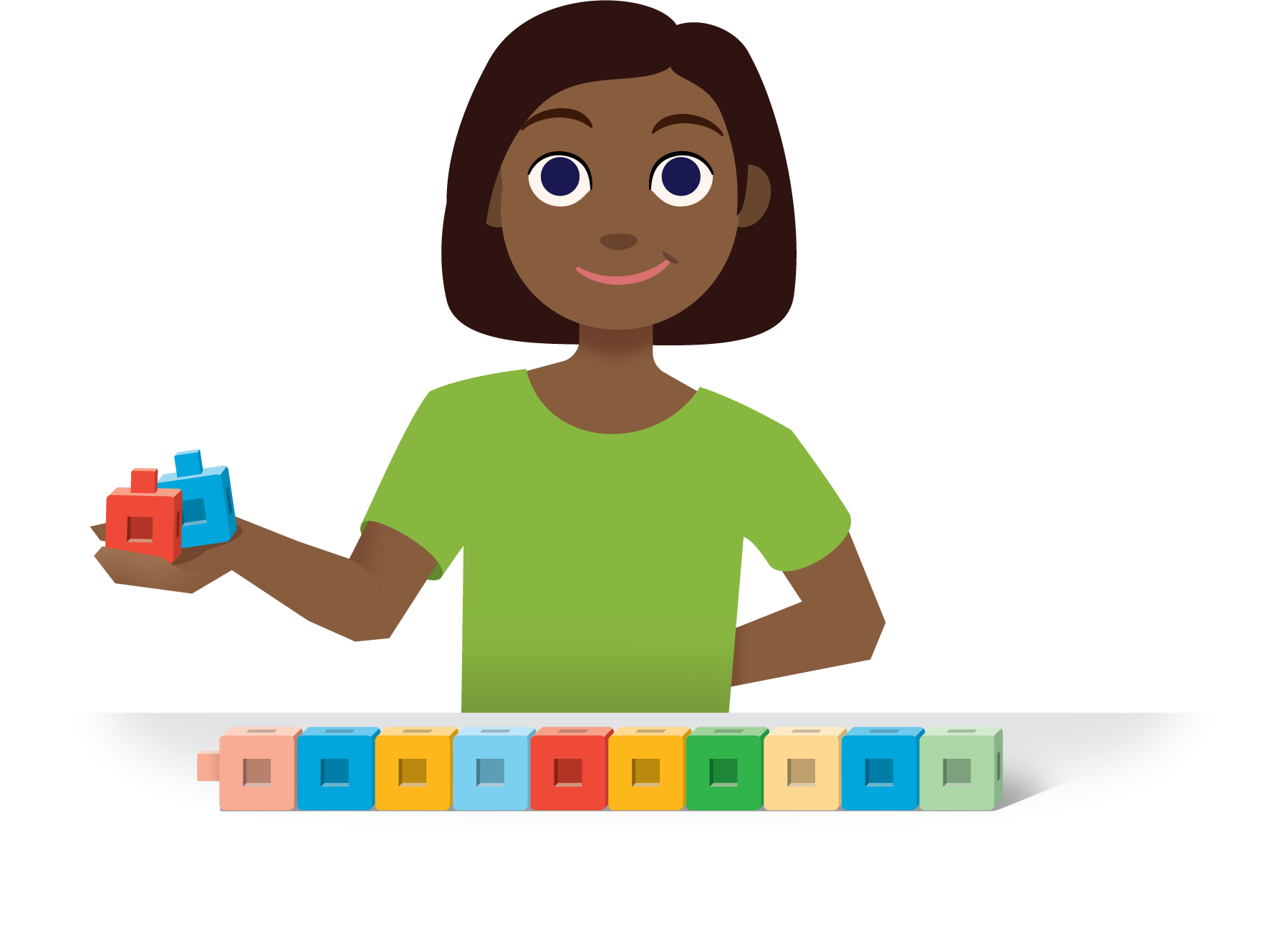Lesson 17
Center Day 3 (optional)
Warm-up: Number Talk: Add Ten More (10 minutes)
Narrative
Launch
- Display one expression.
- “Give me a signal when you have an answer and can explain how you got it.”
- 1 minute: quiet think time
Activity
- Record answers and strategy.
- Keep expressions and work displayed.
- Repeat with each expression.
Student Facing
Find the value of each sum mentally.
- \(27 + 10\)
- \(27 + 10 + 10\)
- \(27 + 30\)
- \(37 + 30\)
Student Response
For access, consult one of our IM Certified Partners.
Activity Synthesis
- “How did you use what you know about place value to find the sums?” (I knew I could start at 27 and count by ten. I knew 30 is the same as 3 tens. I know I could add the tens from each number together and the ones together.)
Activity 1: Revisit Counting Collections (20 minutes)
Narrative
The purpose of this activity is for students to revisit stage 3 of the Counting Collections center. Students are given a collection of up to 120 objects. They record an estimate for how many objects they think are in their collection. Then, they work with a partner to figure out how many objects are in their collection and each partner records how many. Students may draw pictures, write numbers or equations, or use base-ten representations to show their collection. The large groups of objects encourage students to use more sophisticated counting methods such as grouping and counting by twos, fives, or tens. Monitor for students who group objects, count by tens, and justify their total by connecting their total to the number of tens and ones they counted.
10-frames are provided as a blackline master. Students will continue to use these throughout the year. Consider copying them on cardstock or laminating them and keeping them organized to be used repeatedly. Bags of objects should be saved for use in later lessons.
Required Materials
Materials to Gather
Materials to Copy
- Counting Collections Stage 3 Recording Sheet
- 10-Frame Standard
Required Preparation
- Each group of 2 needs a collection of 100–120 objects.
Launch
- Groups of 2
- Give each group a collection of 100–120 objects.
- “We are going to revisit a center you may have played in Kindergarten or first grade. You and your partner will get a collection of objects. Your job is to figure out how many objects are in your collection and show how you counted.”
Activity
- 8 minutes: partner work time
- If needed:
- "How are you going to count your collection?"
- "How many objects were in your collection? Can you prove it to me?"
- "Can you draw a picture to show how you counted?"
- Monitor for students who organize their objects into groups of 10 as they count and create a representation with drawings or numbers.
Activity Synthesis
- Select previously identified students to share.
- “How did you keep track as you counted?”
- “How did _____ represent how they counted?”
Activity 2: Centers Choice Time (25 minutes)
Narrative
The purpose of this activity is for students to choose from activities that focus on adding and subtracting or sorting and representing data.
Students choose from any stage of previously introduced centers.
- What's Behind My Back?
- How Close?
- Number Puzzles
- Sort and Display
Required Materials
Materials to Gather
Required Preparation
Gather materials from:
- What's Behind My Back, Stages 2 and 3
- How Close, Stages 1–3
- Number Puzzles, Stages 1 and 2
- Sort and Display, Stage 2
Launch
- “Today you will choose from centers we have already learned.”
- Display the center choices in the student book.
- “Think about what you would like to do first.”
- 30 seconds: quiet think time
Activity
- Invite students to work at the center of their choice.
- 10 minutes: center work time
- "Choose what you would like to do next."
- 10 minutes: center work time
Student Facing
Choose a center.
What's Behind My Back?

How Close?

Number Puzzles

Sort and Display

Activity Synthesis
- “Which activity did you choose? What did you like about the activity you chose?”
Lesson Synthesis
Lesson Synthesis
“Today we chose activities to work on and worked with a partner during center time.”
Math Community
Display chart from previous sections and read the norms to students.
“What went well? What can we continue to work on?”